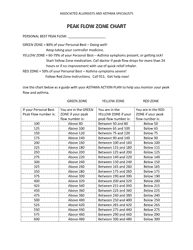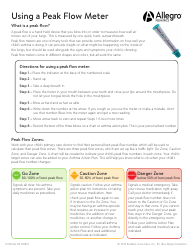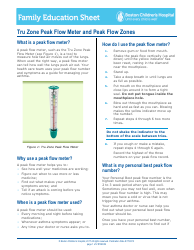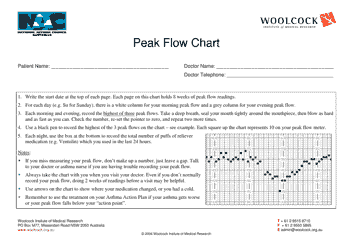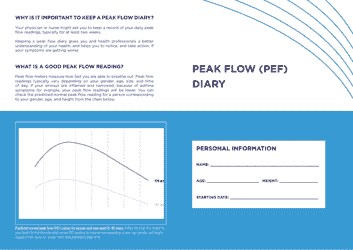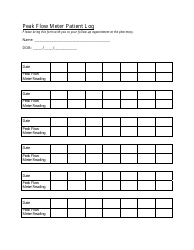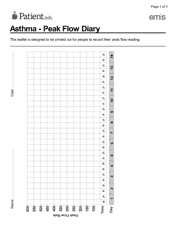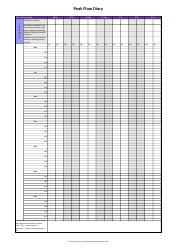Peak Flow Tracking Chart
A Peak Flow Tracking Chart is used to monitor and track changes in a person's peak expiratory flow rate. It helps to assess the severity of asthma and other respiratory conditions.
The person who files the peak flow tracking chart is the healthcare provider or the patient themselves.
FAQ
Q: What is a peak flow tracking chart?
A: A peak flow tracking chart is a tool used to monitor and record changes in a person's peak flow measurements over time.
Q: What is peak flow?
A: Peak flow is a measure of how well air is moving out of the lungs and is commonly used to assess lung function in conditions such as asthma or COPD.
Q: Why is peak flow tracking important?
A: Peak flow tracking is important because it can help individuals with respiratory conditions, such as asthma, monitor their lung function and identify any changes or worsening of symptoms.
Q: How does a peak flow tracking chart work?
A: A peak flow tracking chart typically involves recording daily peak flow measurements using a peak flow meter and then graphing the results over time to visualize any changes or patterns.
Q: What are the benefits of using a peak flow tracking chart?
A: Using a peak flow tracking chart can help individuals and their healthcare providers identify triggers, monitor medication effectiveness, and make informed decisions regarding treatment adjustments.
Q: How often should peak flow measurements be taken?
A: The frequency of peak flow measurements can vary depending on individual needs and healthcare provider recommendations. Some individuals may need to measure their peak flow multiple times a day, while others may only need to do so occasionally.
Q: Is a peak flow tracking chart necessary for everyone with respiratory conditions?
A: A peak flow tracking chart may not be necessary for everyone with respiratory conditions. It is recommended to consult with a healthcare provider to determine if using a peak flow chart would be beneficial for managing your specific condition.


